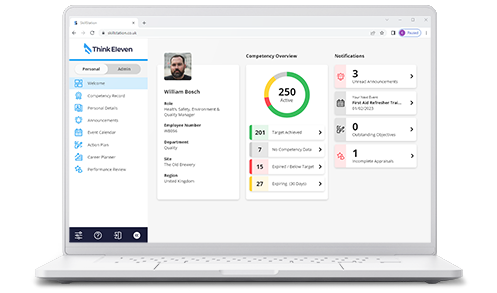Safeguarding Children (Level 1) - for Health eLearning Course
Overview
To protect children and young people from harm, all health staff must have the competences to recognise child maltreatment and to take effective action as appropriate to their role and responsibilities. In 2006 the Royal Colleges and professional bodies jointly published 'Safeguarding Children and Young People: Roles and Competences for Health Care Staff’. The document described 6 levels of competences and provided model role descriptions for named and designated professionals.
Audience
The Health Safeguarding Framework identifies 6 levels of competence, and gives examples of groups that fall within each of these. This course is intended for staff groups in Levels 1 and 2, i.e.: Level 1: All non-clinical staff working in health care settings This includes: receptionists, administrative, catering, transport and maintenance staff. Level 2: All clinical staff who have any contact with children, young people and/or parents/carers. This includes health care students, clinical laboratory staff, pharmacists , ambulance staff, dentists, dental care practitioners, audiologists, opticians, adult physicians, surgeons, anaesthetists, radiologists, nurses working in adult acute/community services (including practice nurses), allied health care practitioners and all other adult orientated secondary care health care professionals, including technicians.
About this course
The course contains additional resource materials, useful links and a refresher guide.
Objectives
This course will enable you to:
Content
Here are some of the topics covered in this course:
Everyone saw Victoria suffering but no one saved her | Serious case reviews | Every Child Matters and the Children Act 2004 | Children’s Trusts and LSCB’s | Baby P (Peter Connelly) | The Munro report | Revision and streamlining of the legislation | Working Together to Safeguard Children | Local Safeguarding Children Boards (LSCB) | LSCB: core functions | What is meant by safeguarding? | Who is responsible for safeguarding children? | Some facts and myths | What are we safeguarding children from? | Definition of child abuse | Definition of significant harm | Parenting and abuse | How to establish whether there is significant harm | The role of Children’s Social Care | Is there really a problem? | Myths on how to treat children | Who abuses children? | Forms of abuse | Indicators of abuse | Children’s response to abuse | Safeguarding: important principles | Causes of physical abuse | Signs from the victim and Signs form the abuser | Effects on children | Definition of emotional abuse | Causes of emotional abuse | Components of emotional abuse | Signs of emotional abuse | Signs from the abuser | Emotional abuse during childhood | Myths of sexual abuse | Grooming | Signs of sexual abuse | Signs from the abuser | Disclosure | Cause of neglect | Signs of neglect | Signs from the abuser | Asking questions | Attempt to resolve? | Making Promises? | Discuss with colleagues? | Can you wait? | Keeping good records | Concerns about a colleague? | What children fear | What children want | Types of disclosure | Safety first and avoiding promises | Listen carefully | Do not interrogate | Communicate appropriately | Actions to avoid | Actions to undertake
This course has a minimum of 25 learner registrations for us to provide a quotation.
Request a Quotation- Language
- UK
- Date last updated
- 9/20/2021
- Duration
- 2 hours
- Suitable Devices
-
- PC
- Audio is Required
-
- Optional
- Includes Video
-
- Yes
- Downloadable Resources
-
- Linked within Course
- Completion Criteria
-
- Pass final test
- Visit all pages
- Pass Mark
-
- 80% pass mark required
- Course Technology
-
- HTML5
- SCORM 1.2
- Can be customised
-
- Available at an Additional Cost
- Accreditation or Endorsements
-
- CPD
- Languages
-
- English
